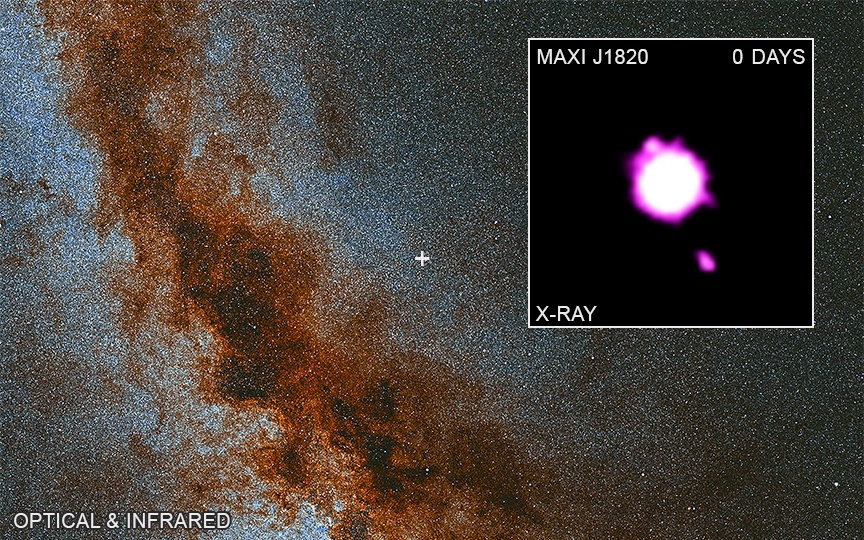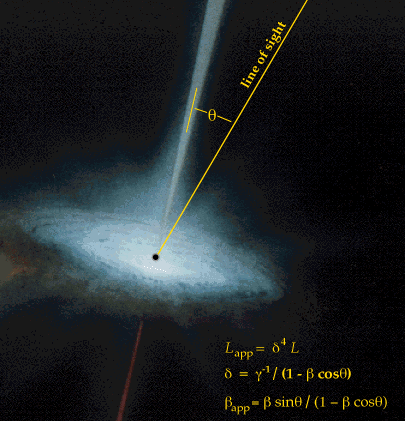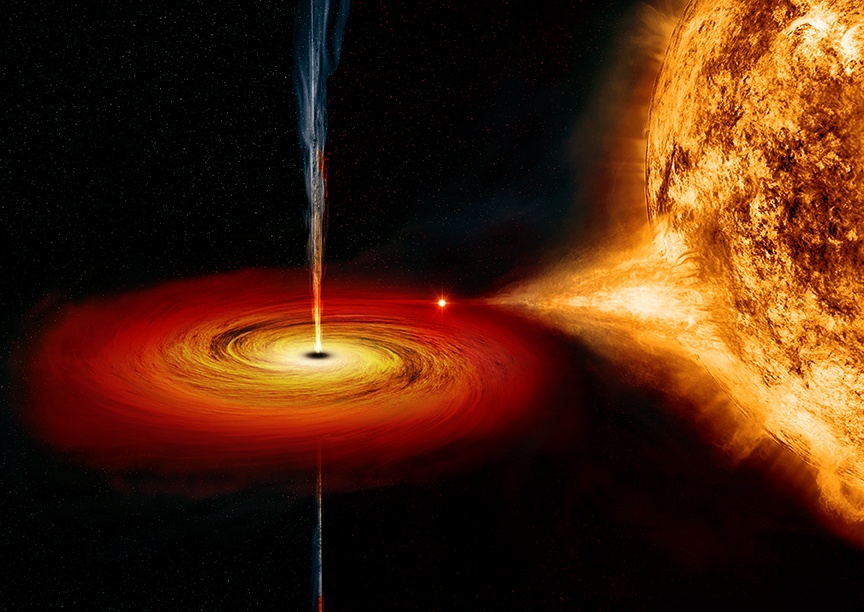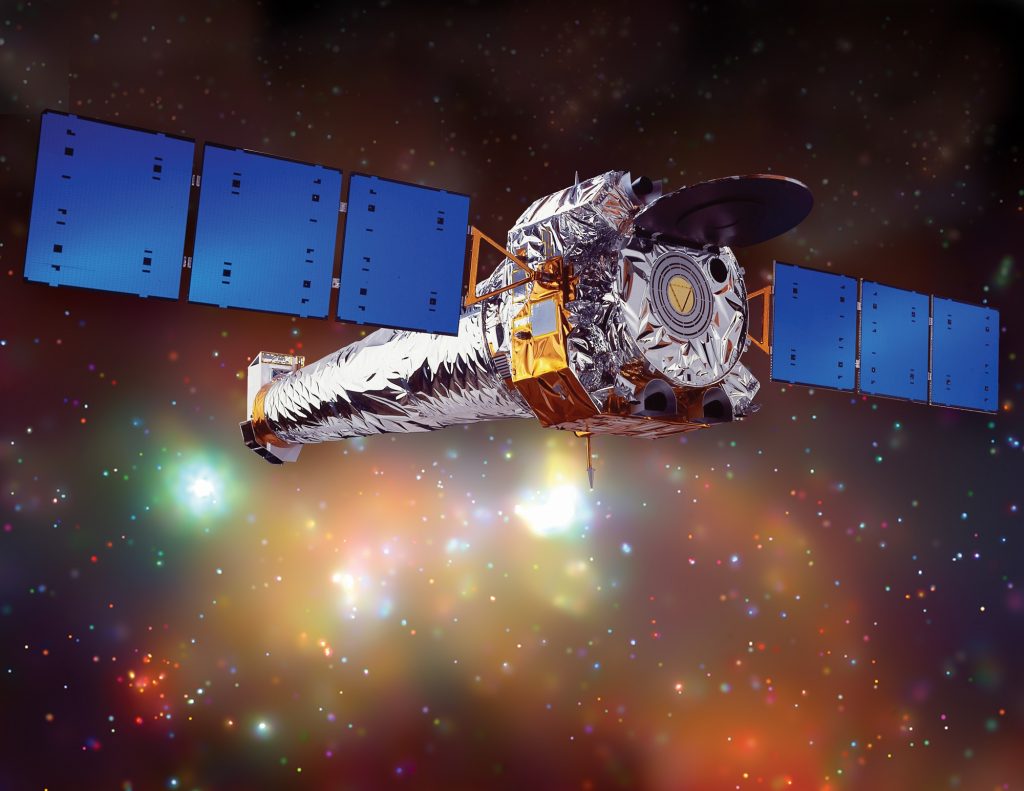The Chandra X-Ray Observatory has spotted a distant black hole shooting out jets of material, at close to the speed of light. No worries, this beast is about 10,000 light years away from us. It’s more of a spectacle than a danger.
But it’s a spectacle laden with scientific insights.
I know what you might be thinking. Some version of “I thought nothing could escape a black hole?” You’re right, nothing can. But this material isn’t acually coming out of the black hole. It’s coming from the material circling around the black hole and being heated by that motion.
These jets of material are called astrophysical jets, or relativistic jets. They’re emitted by swirling disks of material called accretion disks. These disks can be around things like pulsars and neutron stars, or as in this case, around a black hole.
This particular black hole is named MAXI J1820+070. It’s a stellar mass black hole, about eight times as massive as our Sun. And, it has a friend, a binary companion. But the companion isn’t another black hole, it’s a star.
The companion has about half the mass of the Sun. So the relationship is clear: the more massive black hole dominates its stellar companion. It strips material away from the star, onto its accretion disk.

The material in the disk is ill-fated. Much of it will be drawn into the black hole. Once it goes beyond the event horizon, it’s bye bye forever, as far as we can tell. But not all of the material disappears into the black hole. Material in the disk can rotate around the black hole for a long time.
That’s where the jets come from. Some of the material in the disk leaves via the jets, and the jets are compelled to follow magnetic field lines local to the black hole. As a result there are two relativistic jets opposite each other: one north, and one south.
Chandra was able to make a movie of these jets, based on four observations; one each in November 2018 and February, May, and June of 2019. The results of these observations are presented in a paper titled “Relativistic X-ray jets from the black hole X-ray binary MAXI J1820+070.” The lead author is Mathilde Espinasse of the Université de Paris. The paper is published in The Astrophysical Journal Letters.
There’s an unusual phenomenon apparent in these jets. When astronomers measure their velocity, the northern jet is moving at 60% of the speed of light, away from us. But the southern jet, which is moving towards us, is measured at 160% the speed of light. Which we all know is impossible. (We all know that, right?)
What’s at play here is something called “superluminal motion.”

In superluminal motion, the jet of material travelling towards the observer appears to be transgressing the speed of light limit. But it’s not.
What’s happening is that the jet of material itself is travelling at near light speed. And the light coming from the material is travelling at, well, light speed. It has no choice. Combined, this creates the illusion that the light itself is breaking the light speed barrier.
In actual fact, the jets of material are both travelling at the same speed: just over 80% the speed of light. And the light from both jets is travelling at light speed.

The MAXI J1820+070 system has been observed before. There are only two other known examples of a stellar mass black hole emitting jets that travel this quickly. So MAXI is important to astronomers.
A 2019 paper presented some observations of outbursts from MAXI J1820+070 across the electromagnetic spectrum. At that time, the black hole had exhibited some very bright outbursts, especially evident in radio emissions. That paper examined the accretion process, and showed that the inner accretion disk remained stable during the outbursts of brightness. Those researchers also said their paper covered only a small part of the data available on the outbursts.
This paper is, at least partly, a follow-up on the 2019 paper. But the earlier paper spotted the jets in radio emissions, while this one focused on x-ray emissions. It used not only Chandra observations, but also VLA and MeerKAT observations. These observations also doubled the time that the jets were observed in the previous study.
The team behind this paper says that in these two outbursts from 2018, over 400 million billion pounds of material was launched into space. That amount is roughly similar to how much material the black hole could collect on its accretion disk in only a few hours.

The jets themselves are both material and energy. Most of the energy in the jets is released when the particles interact with other material around the black hole. The jets themselves collide with that material and also create shock waves. A press release likens them to sonic bursts from supersonic aircraft in Earth’s atmosphere. When those jets collide with the interstellar material, it creates particle energies higher than those created in the Large Hadron Collider.
As the authors write in their paper, the evidence “…suggests the majority
of the energy of the jets is not radiated and is released once they interact with the surrounding medium.”

